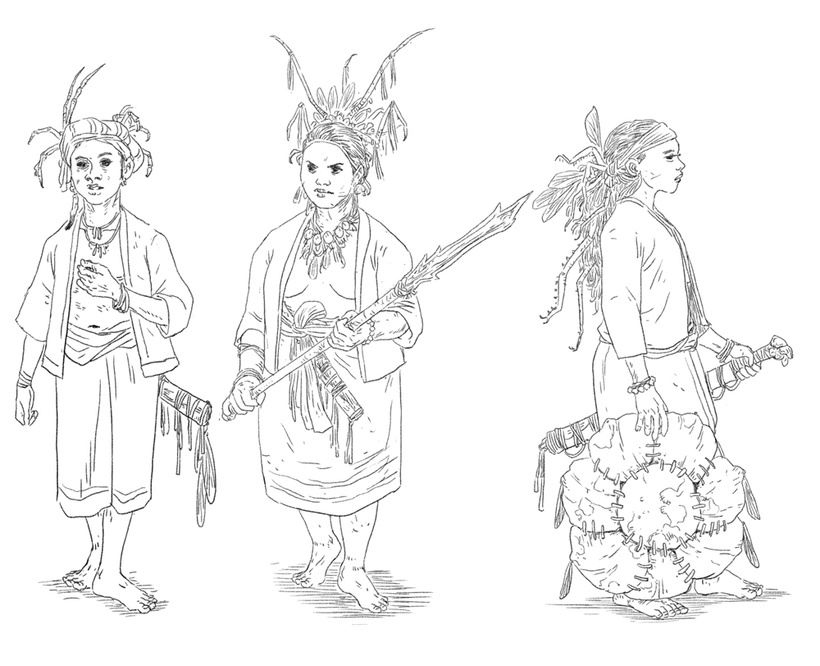
In my last post, I wrote about my grounded approaches with A Thousand Thousand Islands illustrations. Basically:
- Focusing on trivial objects
- Logical extensions of Southeast Asian mundane fantasy as inspiration and reference
- Boring poses/angles
Reach Of The Roach God basically upended the first two of these.
ROTRG is set deep within a cave and there are basically no deep cave civilizations to draw inspiration from; there’s no mundane fantasy to draw inspiration and reference from.
Which also leads to a problem of: what trivial objects to depict when the environment is completely different from a more typical Southeast Asian one? No rattan palms, no banana leaves or bamboo, no trees which means everyday objects would look really different.
This post is about some of the processes and thoughts I try to figure out how to work out the issues.
What is the Centre?
It wouldn’t be hard to come from a place of imagination, but a major anchor of A Thousand Thousand Island is the idea of fantasy centred in Southeast Asia. The problem would be:
Where is that centre if where we are coming from is imagination?
Took me a while, a lot of marinating, sketching and confirming with Zedeck if the approach I came from felt “right”? Zedeck has a better head than me, so I often check my doubts with him.
This was the sketch I sent him and some of the design notes I was keen on exploring
- Cave-folk that have migrated into the caves long ago, not a fantastical race like Dwarves.
- Physically adapted and acclimatized for the deep caves. More subtle and “believable” physical changes.
- Culturally adapted to environments of deep caves but also sharing traces of culture with folks outside of the cave (presumably sharing the same ancestors).
- Fantastical deep caves, giant arachnids, insects and snails.
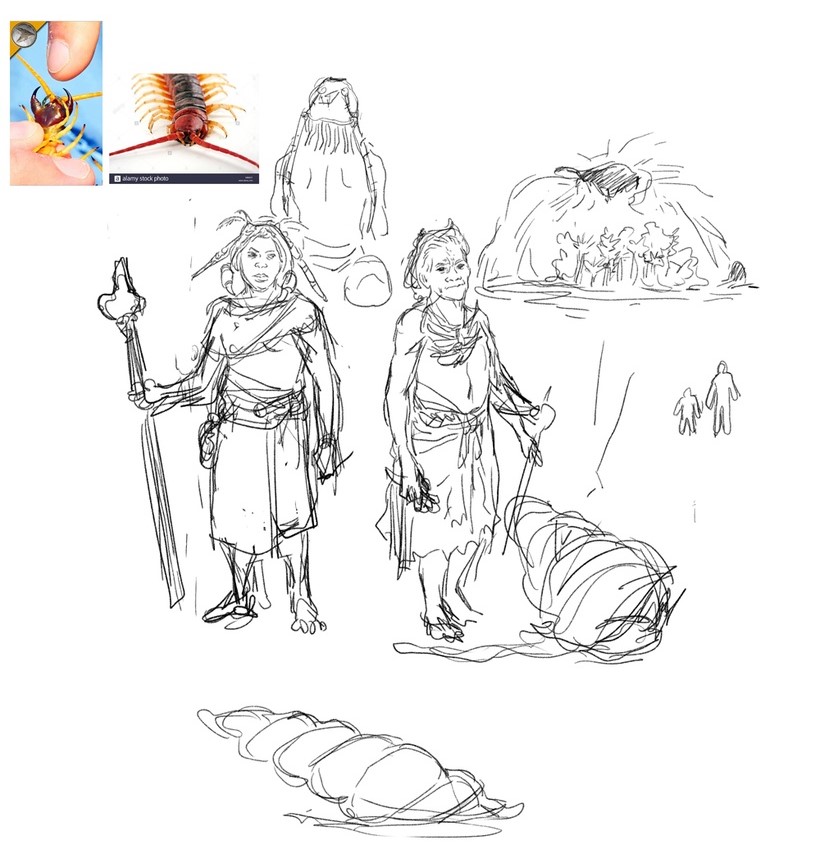
This was the sketch I sent him and some of the design notes I was keen on exploring
- Cave-folk that have migrated into the caves long ago, not a fantastical race like Dwarves.
- Physically adapted and acclimatized for the deep caves. More subtle and “believable” physical changes.
- Culturally adapted to environments of deep caves but also sharing traces of culture with folks outside of the cave (presumably sharing the same ancestors).
- Fantastical deep caves, giant arachnids, insects and snails.

Physical Adaptations
It did not feel right to have a different “race” nor did it feel right to depict normal folks but, in caves. My instinct was to go for some physical changes but not too wild, kind of a balance between fantasy and believable-ity.
Got me thinking of how indigenous people living in high altitudes have higher lung capacities (link), the Flores Hobbit, and the phenomena of how animals/people become smaller on islands (link).
If any peoples have moved into the deep caves for a long time, wouldn’t that be a natural progression?
So I settled on these visual drawings.
- Diminutive, shorter, caves have less resources and smaller needs less resources
- Fairer skin, A loss of melanin is a common adaptation of animals in caves.
- Bigger pupils, While some animals evolve to go blind in caves, it happens more in zero light conditions. Would low light make for bigger eyes? Like nocturnal animals?
Material Culture
This took a while to get comfortable with depicting, as I’ve often used wood, rattan, bamboo as markers of a Southeast Asian feel. But rattan, wood, bamboo, etc has no intrinsic identity itself. The reason it’s ubiquitous in its usage in Southeast Asia is because it’s widely available and incredibly useful.

So similarly, what would be available in fantasy deep caves? Bugs? Giant ones. Giant spiders give opportunities for spider silk. This above is an illustration of the drop spindle technique of spinning (spider) yarn.

Elaborate accessories are a common feature around this region so maybe… insect body parts, wings and carapaces could be made to be jewellery and fashion accessories.

Shield and decorative elements also made of snail shells. I think surface mining for iron is more common in Southeast Asia, but iron COULD be found in caves too?
Cave Culture
What type of culture would the migration and adaptation of living in caves make? Though the question I found myself more interested in was what traces of cultural practises would still remain.
I thought of the waves of Austronesian migrations, of how cultures diverge but so much still stays similar: the architecture of the dwellings, ancestral worship, monoliths, pagan/animist beliefs, etc.
One of the practices I’ve chosen to depict is jar burials but adapted to a cave setting, a cold room of bones in jars.

There is a Thai Temple, Wat Chayamangkalaram in Penang, where there is a huge reclining Buddha.
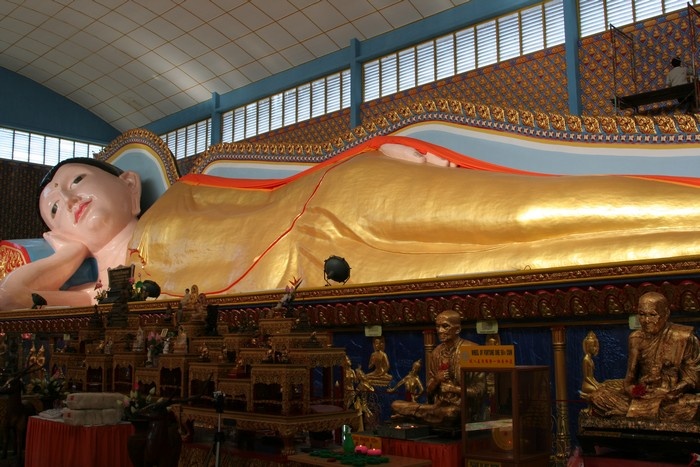
Underneath the statue, filled with urns of the cremated.
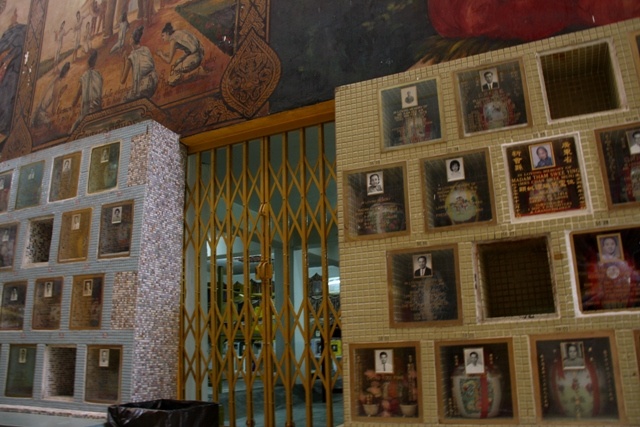
The room was dim and cold, the air, still. It was peaceful, in an eerie way.
Obviously, my skills aren’t good enough to portray that vibe but uhm… intentions count!
Finding Centre
After I was almost done with the drawings, I revisited my initial doubt.
Where is that Centre if where we are coming from is imagination?
Two things I’ve come to realize while working on ROTRG:
This is what Centre-ing is about too, the freedom to move away from that Centre. Not being stuck in representing identity, having the ability and imagination to go further and be comfortable with it.
The other thing is that it was never a place of pure imagination, it comes from somewhere, based on something; stuff I’ve read, experienced, heard or trails of thought that I’d follow. So much of it is probably unconscious and that unconscious default is why this is so much hard work.
The work in tracing influences and recognizing inspirations, I think it allows me to find and decide that centre but also hints and shows the paths on where I can expand on. And that really helps.
Back Reach Of The Roach God on our Kickstarter now! Kickstarter ends on the 8 of December.
This post was originally published August 25, 2021 on the A Thousand Thousand Islands Patreon.

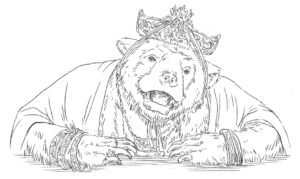
One Response
Wonderful illustrations based on thoughtful insights, thank you!